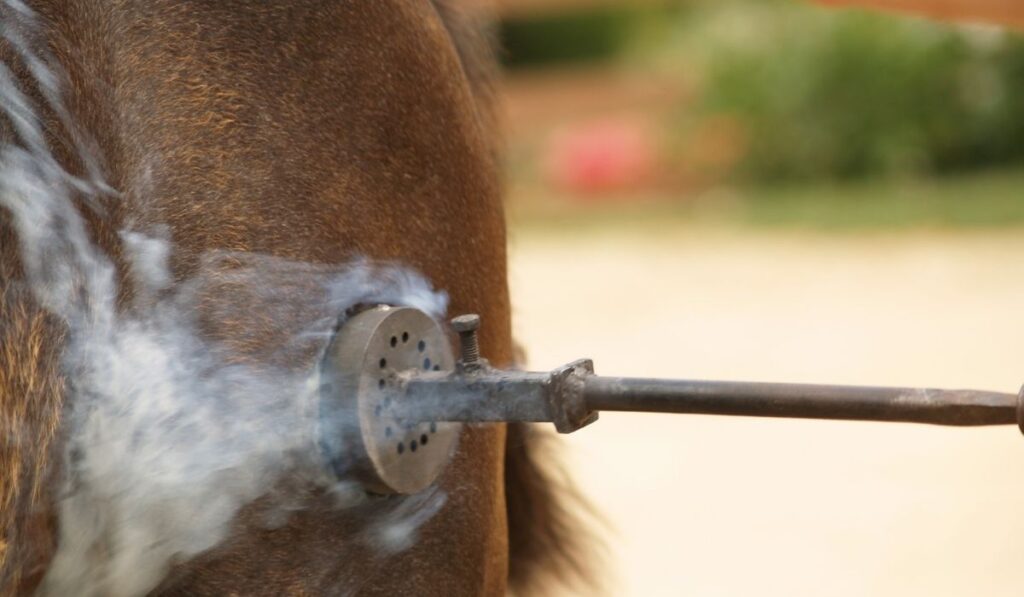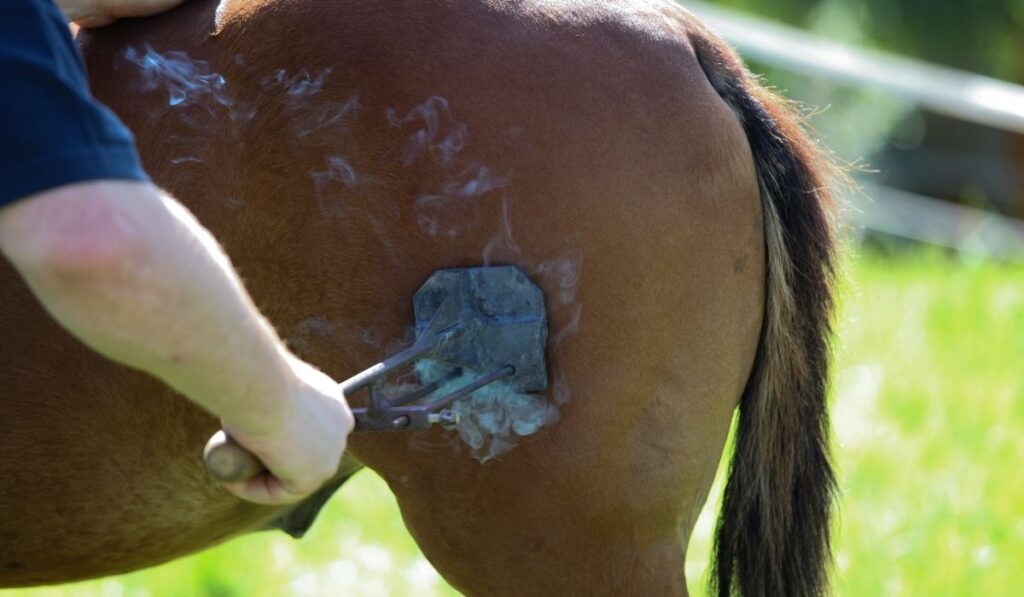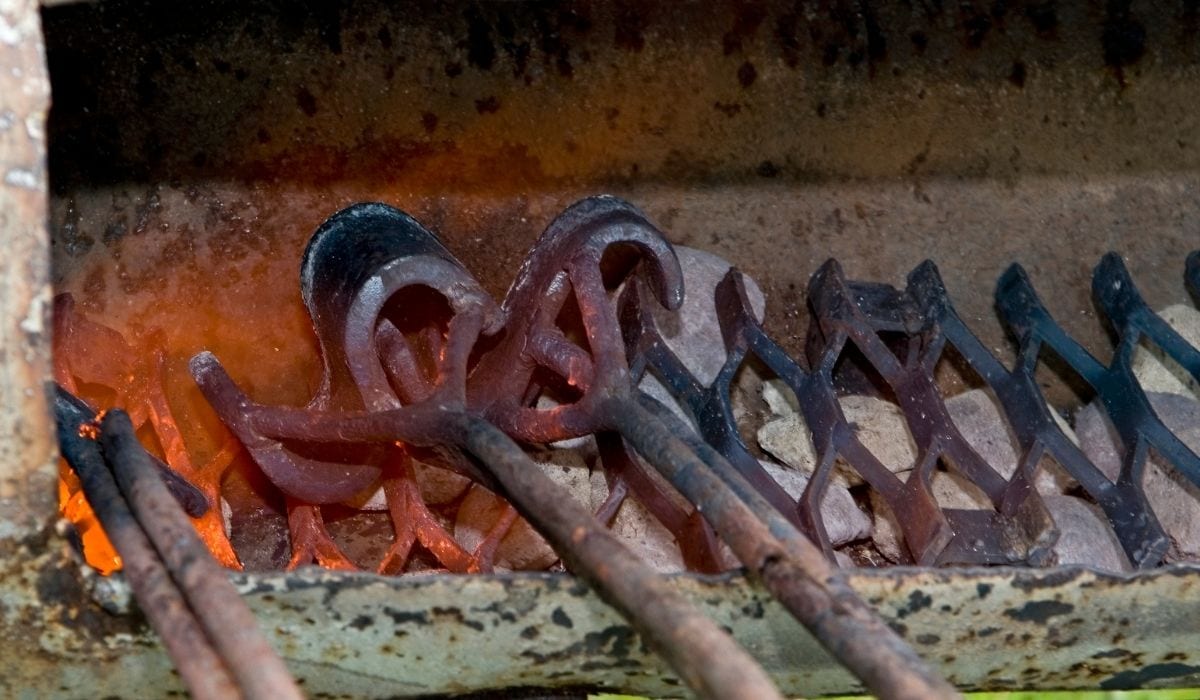You might’ve heard about horse brandings, but do you really know what it’s all about? If you’re a horse enthusiast, a ranch owner, or even just curious about the world of equine traditions, this topic is definitely worth exploring. Horse branding isn’t just about marking ownership—it’s a practice steeped in history, culture, and significance. Let’s dive into the nitty-gritty of why horse brandings matter and how they’ve evolved over time.
Horse branding has been around for centuries, and it’s not just some random act of putting a mark on an animal. This practice is deeply rooted in the ranching and farming communities, where identifying livestock was crucial for survival. Back in the day, when horses roamed free across vast lands, having a unique identifier was key to avoiding disputes and theft. It’s kind of like putting your name tag on your stuff back in school—but way cooler.
In today’s world, horse brandings still hold immense value. Whether it’s for legal purposes, breeding records, or simply maintaining the tradition, branding remains a vital part of equine management. But let’s not get ahead of ourselves. Before we break down the ins and outs of horse brandings, let’s take a quick look at what you’re about to discover. Stick around, because this is gonna be wild!
Read also:Victoria Jane Verstappen The Rising Star You Need To Know About
Table of Contents
The Rich History of Horse Brandings
Common Methods of Horse Brandings
Legal Aspects of Horse Brandings
Controversy Surrounding Horse Brandings
Modern Approaches to Horse Identification
Read also:Nohemy Leaks The Untold Story Behind The Viral Sensation
Famous Horse Brandings Around the World
Tips for Conducting a Safe Horse Branding
Wrapping Up: Why Horse Brandings Matter
The Rich History of Horse Brandings
Horse brandings have been around since ancient times, with evidence of the practice dating back thousands of years. The Romans, for instance, used branding to mark their warhorses, ensuring they could be easily identified on the battlefield. Fast forward to the Old West, where branding became an essential tool for ranchers who needed to distinguish their horses from those of neighboring farms.
In the early days, branding wasn’t just about functionality—it was also a form of art. Ranchers would design unique symbols and patterns that represented their families, clans, or businesses. These symbols became so iconic that they were often passed down through generations, becoming a symbol of pride and heritage.
But why did branding become so popular? Well, imagine owning a herd of horses that roam freely across thousands of acres. Without a clear way to identify your animals, it’d be chaos. Branding solved this problem by providing a permanent, visible mark that couldn’t be easily altered or removed. And trust me, in the wild west, where horse theft was rampant, that kind of security was priceless.
How Branding Evolved Over Time
As technology advanced, so did the methods of branding. What started as a simple hot iron has now evolved into a variety of techniques, including freeze branding and even digital identification methods. But no matter how much things change, the core purpose of branding remains the same: to provide a reliable way to identify horses.
Common Methods of Horse Brandings
When it comes to horse brandings, there’s no one-size-fits-all approach. Different methods are used depending on the purpose, location, and preference of the owner. Let’s take a look at some of the most common techniques:
- Hot Iron Branding: The classic method, where a heated iron is used to burn the skin, creating a permanent mark. This technique is still widely used today, especially in traditional ranching communities.
- Freeze Branding: A more modern approach that uses liquid nitrogen to freeze the skin, causing the hair to grow back white in the branded area. This method is less painful and often preferred for show horses.
- Microchipping: While not technically branding, microchipping involves inserting a small chip under the horse’s skin, which can be scanned for identification. It’s a high-tech solution gaining popularity in recent years.
Each method has its pros and cons, so it’s important to choose the one that best suits your needs. For example, if you’re looking for a visible mark that’s easy to read from a distance, hot iron branding might be the way to go. On the other hand, if you want a subtler approach, freeze branding or microchipping could be better options.
Legal Aspects of Horse Brandings
Did you know that horse brandings are regulated by law in many countries? That’s right—there are specific rules and regulations governing how and when you can brand a horse. These laws are in place to protect both the animals and their owners, ensuring that branding is done safely and ethically.
In the United States, for example, each state has its own set of rules regarding horse brandings. Some require registration of the brand design, while others mandate that only licensed professionals can perform the procedure. It’s crucial to familiarize yourself with these laws before attempting to brand a horse yourself.
Why Are These Laws Important?
These regulations serve several purposes. First, they help prevent fraudulent activities, such as stealing horses and altering their brands. Second, they ensure that branding is done in a humane manner, minimizing pain and discomfort for the animal. Finally, they provide a legal framework for resolving disputes over ownership.
Benefits of Horse Brandings
Now that we’ve covered the history and legal aspects, let’s talk about why horse brandings are so beneficial. Here are just a few reasons why this practice is still relevant today:
- Ownership Identification: The primary purpose of branding is to clearly identify the owner of a horse. This is especially important in areas where horses roam freely.
- Breeding Records: Brands can also be used to track a horse’s lineage and breeding history, making it easier for breeders to manage their herds.
- Security: A branded horse is much harder to steal, as the mark serves as a clear indicator of ownership.
These benefits make horse brandings an invaluable tool for anyone involved in the equine industry. Whether you’re a small-scale rancher or a large commercial operation, branding can help protect your investment and ensure the integrity of your herd.
Controversy Surrounding Horse Brandings
As with any practice involving animals, horse brandings have faced their share of controversy. Critics argue that branding can be painful and stressful for horses, and some even question its necessity in today’s world of advanced technology.
On the other hand, proponents of branding point out that, when done correctly, it’s a relatively quick and harmless procedure. They also emphasize its importance in preventing theft and maintaining accurate records.
Alternatives to Traditional Branding
For those who are concerned about the ethical implications of branding, there are alternatives worth considering. Microchipping, for instance, is a painless and effective way to identify horses without leaving a visible mark. However, it’s important to weigh the pros and cons of each method before making a decision.
Modern Approaches to Horse Identification
While traditional branding methods are still widely used, the equine world is embracing new technologies to enhance identification processes. From GPS tracking to DNA profiling, these innovations are revolutionizing the way we manage and protect our horses.
One of the most exciting developments is the use of RFID (Radio Frequency Identification) tags, which allow for real-time tracking of horses. This technology not only improves security but also provides valuable data on the animal’s health and behavior.
Will Traditional Branding Become Obsolete?
Despite these advancements, it’s unlikely that traditional branding will disappear anytime soon. Many ranchers and horse enthusiasts still prefer the simplicity and reliability of a good old-fashioned brand. Plus, there’s something undeniably romantic about carrying on a centuries-old tradition.
Tools Used in Horse Brandings
If you’re thinking about conducting a horse branding, it’s essential to have the right tools for the job. Here’s a quick rundown of what you’ll need:
- Branding Iron: Whether hot or freeze, a quality branding iron is the cornerstone of any successful branding operation.
- Heat Source: For hot iron branding, you’ll need a reliable heat source to ensure the iron reaches the correct temperature.
- Cold Source: If you’re doing freeze branding, you’ll need access to liquid nitrogen or another suitable cooling agent.
Investing in high-quality tools is crucial for ensuring a safe and effective branding experience. Don’t skimp on this step—it could mean the difference between a successful branding and a disaster.
Post-Branding Care for Horses
After the branding is complete, proper care is essential to ensure the horse heals properly. Here are a few tips for post-branding care:
- Keep the Area Clean: Regularly clean the branded area to prevent infection.
- Avoid Scratching: Make sure the horse doesn’t scratch or rub the branded area, as this can delay healing.
- Monitor for Infection: Keep an eye out for any signs of infection, such as swelling or discharge, and consult a vet if necessary.
By following these guidelines, you can help ensure a smooth recovery for your horse and minimize the risk of complications.
Famous Horse Brandings Around the World
Some horse brands have become so iconic that they’re recognized far beyond the ranches where they originated. Here are a few examples:
- The ZX Brand: Used by the ZX Ranch in Wyoming, this brand is one of the most famous in the United States.
- The Running W Brand: Associated with the Wrigley family, this brand is a symbol of wealth and prestige in the horse world.
- The Bar T Brand: Popular in Texas, this brand is often seen on working ranch horses across the state.
These brands not only identify the horses but also tell a story about the people and places behind them.
Tips for Conducting a Safe Horse Branding
Whether you’re a seasoned pro or a first-timer, safety should always be your top priority when conducting a horse branding. Here are a few tips to keep in mind:
- Consult a Professional: If you’re unsure about any aspect of the process, don’t hesitate to seek advice from an experienced horseman or veterinarian.
- Use Proper Equipment: Make sure all your tools are in good working condition and appropriate for the task at hand.
- Plan Ahead: Have a clear plan in place, including contingencies for unexpected issues.
By following these tips, you can help ensure a safe and successful branding experience for both you and your horse.
Wrapping Up: Why Horse Brandings Matter
From ancient civilizations to modern-day ranches, horse brandings have played a vital role in the world of equine management. They’re more than just a mark—they’re a symbol of ownership, heritage, and identity. While the methods and technologies may have evolved over time, the core purpose of branding remains unchanged.
So, whether you’re a rancher looking to protect your herd or a curious enthusiast wanting to learn more about this fascinating tradition, there’s no denying the importance of horse brandings. If you’ve enjoyed this article, don’t forget to share it with your friends and fellow horse lovers. And if you have any questions or comments, feel free to drop them below—I’d love to hear from you!


